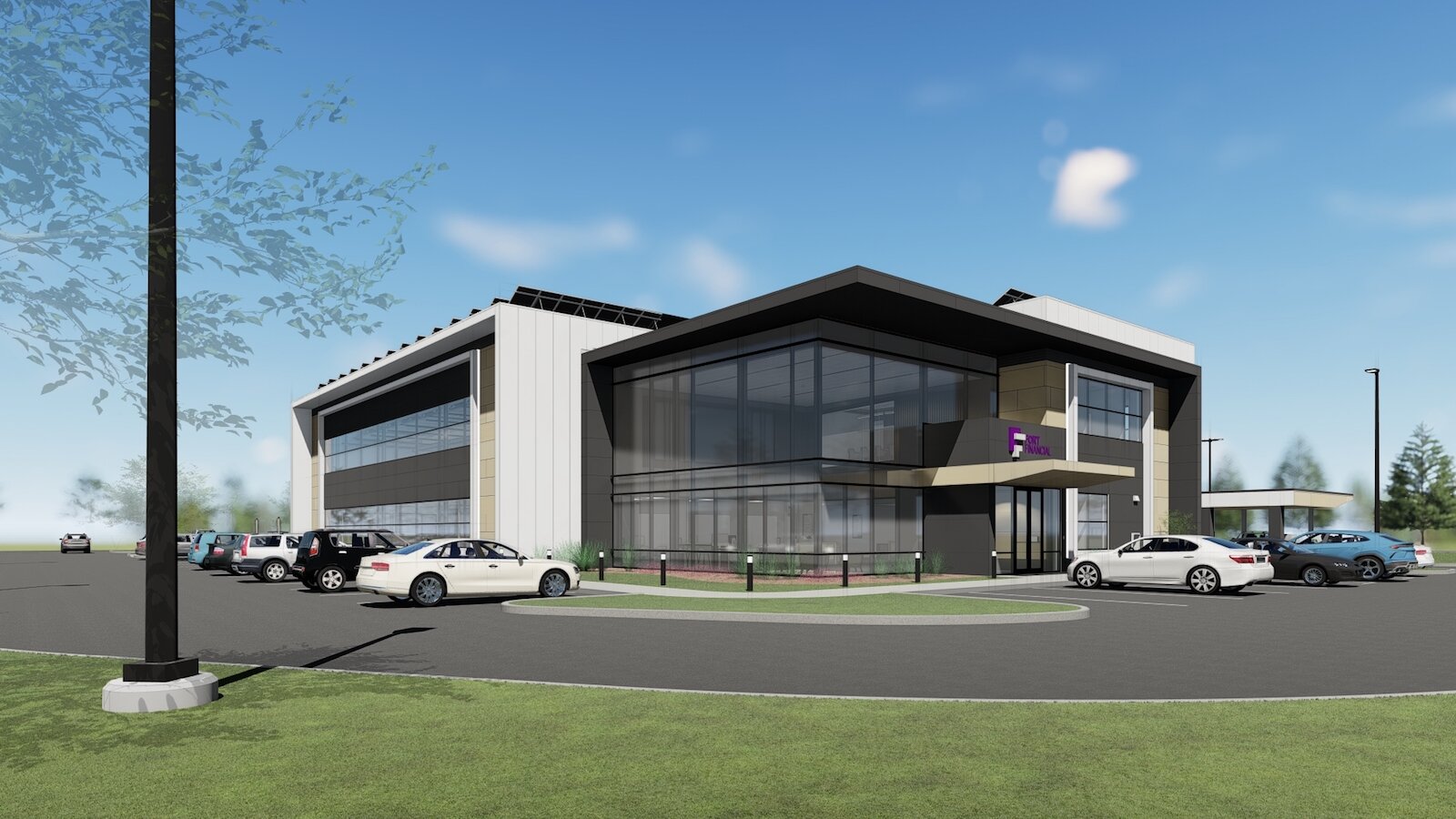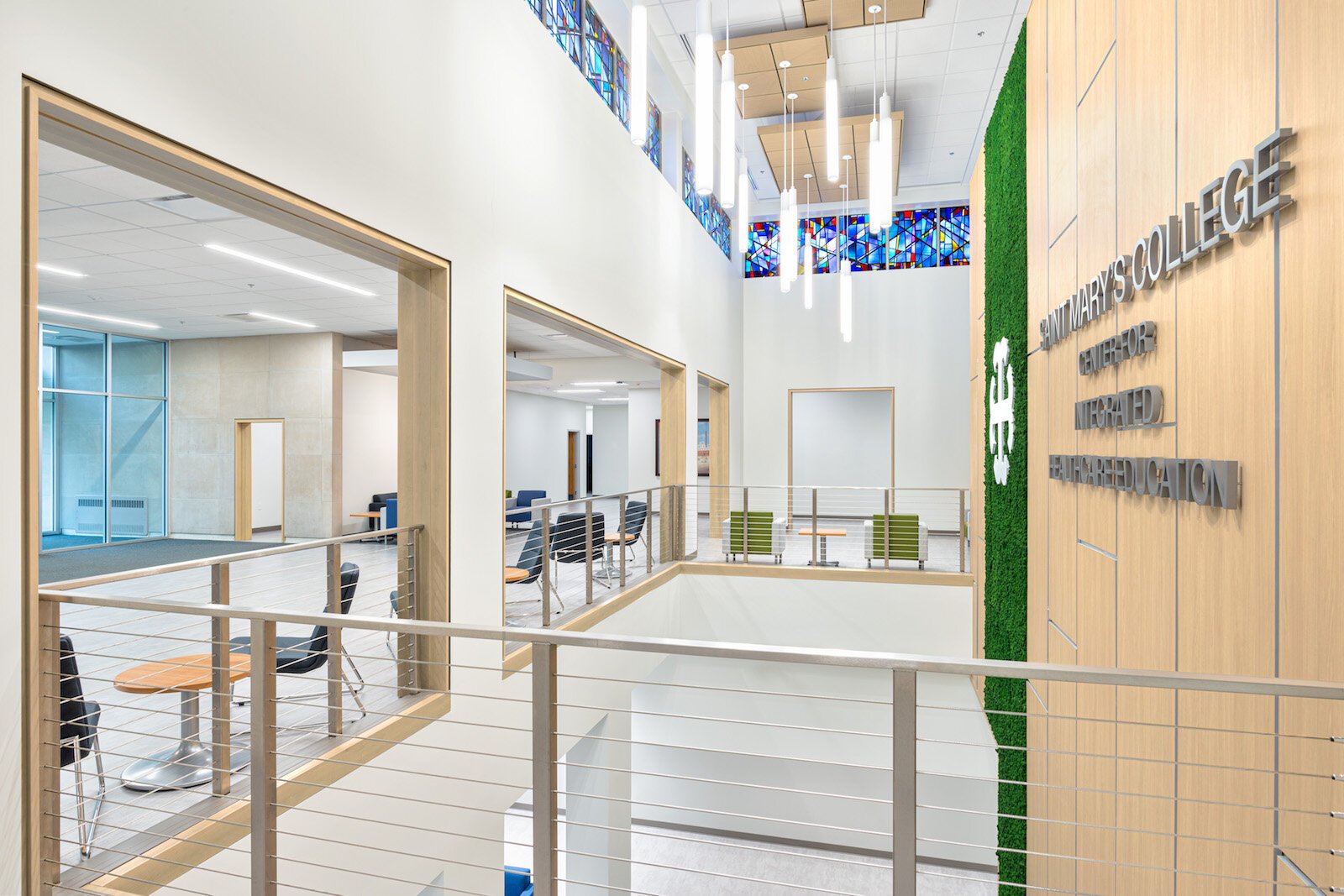Partner Partner Content How healthy is your office? It’s time to consider the net zero and WELL Building workplace
Both of these concepts are rooted in “people first” design, bringing a number of health benefits to their environments as well as the people within their walls.
The COVID-19 pandemic has changed the way we work. From more flexible schedules to more Zoom calls and remote work opportunities, evidence of workplace evolution is all around us.
But even if you have a job that still requires you to be on-site, and specifically, in an office, there are a few ways your organization can reap the benefits of more intentional design and innovation to stay competitive among job seekers.
Just ask Design Collaborative. They are a design and architecture firm based in Fort Wayne that has designed offices across the U.S., and they say two concepts modern workplaces should consider adopting are net zero and WELL Building Standards. Both of these concepts are rooted in “people first” design, bringing a number of health benefits to their environments as well as the people within their walls.
Jordan Backer, a Mechanical Engineer at Design Collaborative, says his team brings sustainability and well-being into conversations with clients. Both standards—especially net zero—have become increasingly attractive to clients in recent years.

While clients are sometimes unsure if net zero and WELL Building Standards are worth the cost upfront, the costs are often outweighed financially—and by a multitude of benefits—down the road, Backer says. Net zero and WELL Building Standards can even help employers stay competitive in a hot job market.
“It’s something they can bring to the table,” says Backer. “Would you rather work in an office with bright fluorescent lighting that gives you a headache or natural lighting that’s better for your mental and physical health?”
Along with offices, residential buildings are also adopting these standards to attract renters.
“When looking for somewhere to live, you’re looking at what that building can bring to you,” says Backer. “Better insulation that lowers your bills, better acoustics so you can’t hear your neighbor’s TV. These are all things our clients want to be able to tell their clients they have.”
So, what are these concepts, and what do they look like in action? We asked Design Collaborative’s team in Fort Wayne to find out.
Net zero

A Net Zero Energy Building (NZEB) is one that produces as much energy as it uses over the course of a year, creating a zero balance—or ideally, even outweighing its energy consumption with clean, renewable resources.
As Phillip Oprie, an Electrical Designer at Design Collaborative, puts it: “The idea behind net zero is to balance out the energy spent building and running the structure with energy offsets and sustainable sources.”

While becoming completely net zero is a lofty goal for many workplaces, several of Design Collaborative’s clients have implemented methods of decreasing their building’s environmental footprint after starting the conversation surrounding sustainability. There are multiple ways for companies to design or renovate their space to decrease their carbon footprint, from rethinking how the building is heated and cooled by using geothermal methods to ensuring proper ventilation, energy-efficient lighting, and onsite energy generation.
Along with helping the environment and boosting their appeal among jobseekers, some net zero practices are likely to also enhance a company’s performance and bottom line.
“One thing many companies find attractive about energy-efficient options is going off-the-grid or achieving energy independence, which can lead to faster recovery from electrical failures,” says Oprie.
Onsite energy generation, most commonly found in the form of solar panels, not only leads to faster recovery from natural disasters, but also greatly reduces energy costs for business owners. This has made net zero more broadly appealing to clients, even budget-strapped organizations, like nonprofits.
“For many clients, like nonprofits, lowering these utility costs is a priority, and renewable energy sources provide just that,” says Kelly Shields, an Architectural Designer at Design Collaborative.
While some clients are ready to adopt a full net-zero strategy, others are able to take smaller steps toward more sustainability, says Oprie.
“I’d say the most popular sustainable additions would be added insulation, LED lighting, and automated lighting controls,” he says.
One project Design Collaborative has in progress that’s incorporating sustainability is the Fort Financial Headquarters in Fort Wayne. It’s utilizing solar energy via panels on its roof.
“The panels are projected to produce about 50MWh (megawatt-hours),” Oprie says. “This will cover roughly 20 percent of the overall estimated annual building electrical usage.”
WELL Building Standards

While net-zero tends to focus on a building’s impact within its environment, WELL Building Standards are focused on the building’s impact on workers or the human capital within its walls.
Since 2014, a national organization known as WELL has worked to transform building standards in ways that advance people’s health and well-being. They do this through a rating system anchored in scientific research and industry best practices.
“Organizations everywhere–from startups to Fortune 500s–use WELL to prioritize the health and safety of their people, maximize real estate value and optimize the human and social capital performance of their business,” WELL’s website says.
Alex Kircher, a Registered Architect at Design Collaborative, explains that the WELL Building Standard is comprised of 10 categories, each with various prerequisites.

“They’re all scientifically proven ways to improve the health and general well-being of those inhabiting the building,” he says.
Some of the WELL Building standards are higher levels of water filtration, promoting fitness and movement, and minimizing air pollution. There’s some overlap between net zero and WELL Building solutions, too, such as natural lighting, better insulation, and natural ventilation.
Kircher says the Well Building Standard was created as a tool for developers and building owners to set their buildings apart, but there has been growing interest from the Education market.
“It’s also increasingly popular with office buildings,” he says.
Design Collaborative has found it valuable to incorporate the features of the WELL Building Standard into their design projects, even when they can’t use the full standard. For instance, the Saint Mary’s Regina Hall Center for Integrative Healthcare Education was a recent project where, even though the owner decided not to pursue WELL Building Certification, they still incorporated people-focused design ideas, such as natural light, biophilic design, and acoustical separation into their project.
While perfection is difficult to attain, taking small steps toward net zero energy usage and WELL Building Standards can create better outcomes for businesses, people, and the planet alike.
This story is part of a series on the Future of the Workplace. It is made possible by underwriting from Design Collaborative.










